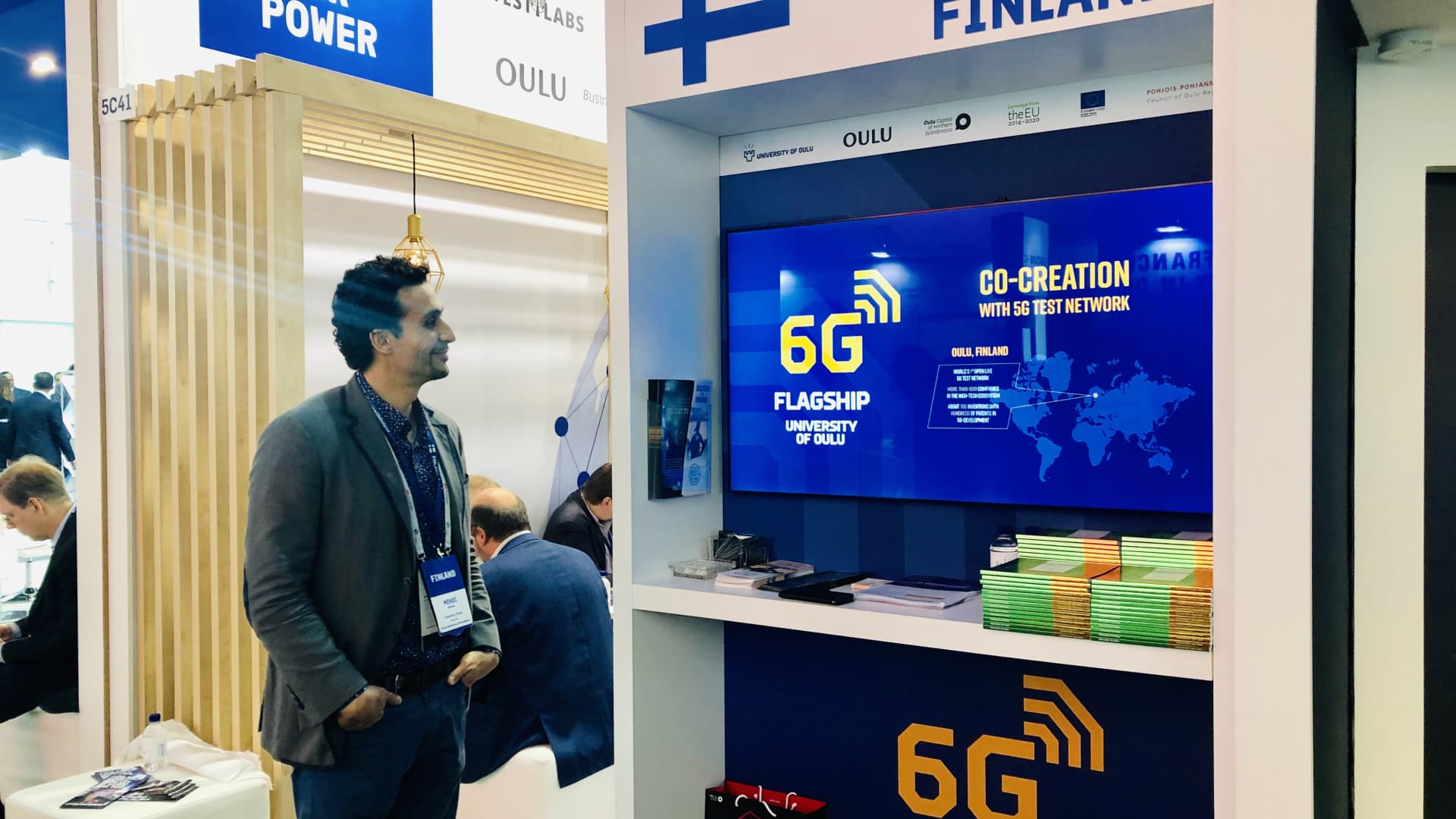Mehdi Bennis, an associate professor at the University of Oulu in Finland, is investigating 6G.
Nokia CEO Pekka Lundmark expects 6G mobile networks to be operational by the end of the decade, but doesn’t think the smartphone will be the “most popular interface” by then.
Lundmark, speaking to a panel at the World Economic Forum in Davos on Tuesday, said he expects 6G to hit the commercial market by 2030.
Headquartered in Finland, Nokia builds communications networks that allow phones and other Internet-enabled devices to communicate with each other.
Asked when he thinks the world will transition from using smartphones to wearing smart glasses and other face-worn devices, Lundmark said this will happen before 6G arrives.
“By then, the smartphone as we know it today will certainly not be the most popular interface,” he said. “A lot of this stuff is going to be incorporated directly into our bodies.”
He did not specify exactly what he was referring to, but some companies, such as Elon Musk’s Neuralink, are working on the production of electronic devices that can be implanted in the brain. They are used to communicate with machines and other people. At a more basic level, the chips can be implanted in people’s fingers and used to unlock things.
Elsewhere, American tech giants like Dead and Google and Microsoft are working on a new augmented reality headset that could one day replace the smartphone.
“We think one of the great advantages of AR is actually solving problems here on Earth,” said Ruth Porat, Google’s chief financial officer, speaking on the same panel.
“It will be things like wearing glasses and being able to translate while speaking with glasses,” he added. “They are very close”.
Google previously released an AR headset called Google Glass, but eventually pulled it after the device failed to gain traction.
Tech leaders also discussed the opportunities and challenges posed by the metaverse.
Lundmark said he believes that by 2030 there will be a “digital twin of everything” that will require “enormous computational resources.”
To carry all the computing hardware required by the metaverse, Lundmark said, networks would have to be at least 100 times or even 1,000 times faster than they are today.

